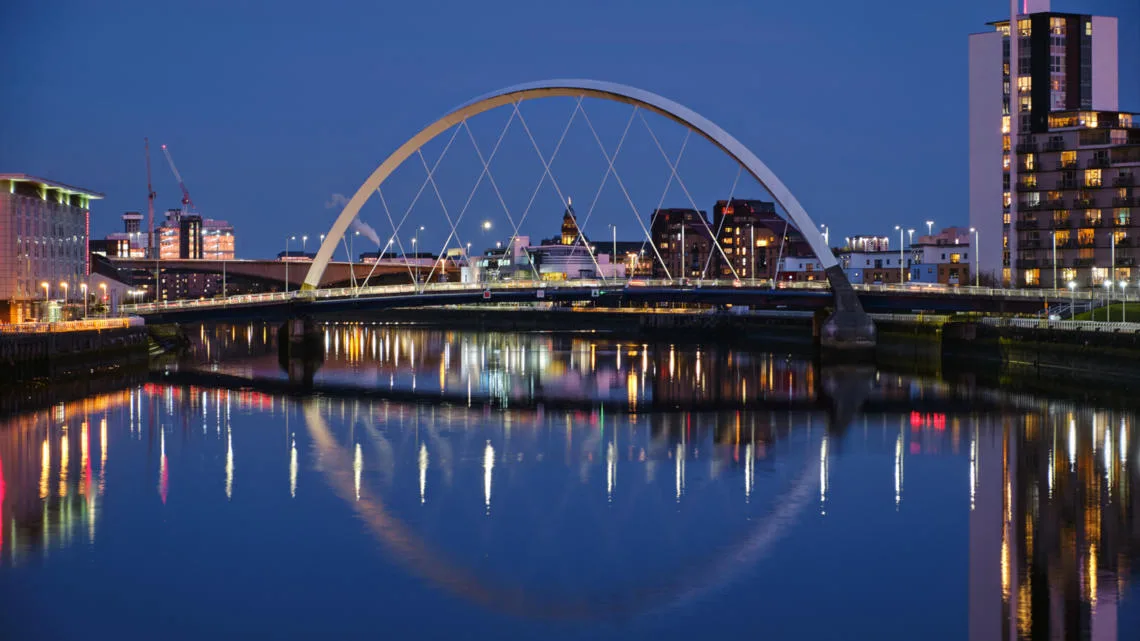Authors
Roland Hunziker
This week, the world is looking to Glasgow in the UK to witness the discussions and decisions of one of the most critical conferences for humankind, the 26th Conference of the Parties to the UN Climate Convention (COP26). The news reaching us from all around the globe on climate change is alarming. We are not on track to reduce global greenhouse gas (GHG) emissions in line with the historic Paris Agreement of six years ago, to keep global warming to a maximum of 1.5 degrees Celsius, and the calls for more decisive action from governments are getting louder and more desperate by the day.
As we reflect on this important moment, and as many influential people are coming together in the halls of the Scottish Events Centre in Glasgow, we should remind ourselves that we can and must take vital steps to reduce climate-warming gases going into the atmosphere – and this is possible if we collaborate, adopt a whole-life carbon approach and set clear targets.
I am honored to work for a visionary organization bringing together over 200 of the world’s leading sustainable businesses working collectively to accelerate the system transformations needed for a net zero, nature positive, and more equitable future. The people running these businesses are taking action inside their organizations and work with partners, suppliers and customers along the value chains they are involved in to tackle the three-fold emergency confronting us – the climate emergency, nature loss and growing inequality.
Halving the 40% by 2030 – a net-zero built environment by or before 2050
My work is dedicated to an economic sector, or system, that underpins all human life, provides us with shelter, helps us move around and forms a critical foundation for most economies – the built environment. It is a sector with a substantial footprint, representing close to 50% of global wealth, ca. 15% of global GDP and employment, and importantly, 50% of global virgin resource consumption, 40% of global energy-related GHG emissions (or 13Gt per year), and 40% of waste streams.
Transforming the built environment, so that it becomes more human-centric, more in tune with nature and less resource-intense, is a huge challenge. The built environment value chain is fragmented, made up of many players – often very small companies – that operate on low margins and with a short-term focus on delivery and cost. But this transformation also provides a big opportunity – to change mindsets and focus, and to collaborate towards a different future.
Some very positive signals are emerging – not least from the global Race to Zero that the High-Level Climate Champions for COP26 launched last year. Hundreds of companies, as well as cities, are signing up to the Race to Zero, and notably companies operating in the built environment, where the campaign has reached its breakthrough target of at least 20% companies from any given sector signing up. And close to 1,000 companies have set science-based targets and committed to net zero through the Science-based targets initiative (SBTi). This is very positive news!
We know that in order to decarbonize the built environment we need to halve its emissions by 2030, whereby 100% of new buildings must be net-zero carbon in operation, with widespread energy efficiency retrofit of existing assets well underway. Embodied carbon, or emissions emitted during manufacture of building materials, must be reduced by at least 40%, with leading projects achieving at least 50% reductions in embodied carbon. By 2050, at the latest, all new and existing assets must be net zero across the whole life cycle, including operational and embodied emissions (Marrakech Partnership for Global Climate Action, Human Settlements Pathway).
So we must, and we can, act now. These targets are within reach, and WBCSD and many other partners are working with business, finance and policymakers to develop a collaborative approach. In a recent report, we showed that with focus and collaboration, we can indeed reduce the full life-cycle emissions of buildings by half by 2030. This requires that building owners, developers, investors, architects, construction companies, energy and material providers, and cities and governments, all work together to achieve the common goal. It also demands that we treat carbon with the same importance as cost and price, based on a full life-cycle and performance-based approach and by starting to set absolute emissions reduction targets.
Market transformation levers for a net-zero built environment
Under the umbrella of the Global Alliance for Buildings and Construction (GlobalABC), WBCSD has worked with a number of organizations on defining what it will take to transform the built environment towards net zero. Critically, all actors from business, finance, policy and science need to work together on a few “key levers for market transformation”, which are based on two underlying enablers:
- A shared understanding of the importance of the built environment for climate mitigation and a common vision for its urgent decarbonization as a system;
- The importance of radical and deep collaboration within and across all stakeholders of the built environment.
The three fundamental levers to drive the market transformation along the full value chain of the built environment are the following:
- Align behind whole-life carbon (WLC): Adopt WLC and life-cycle thinking across the value chain and market to align on key indicators, metrics and targets consistently.
- Integrate carbon cost and price: Internalize the WLC emissions costs and reflect them in the price of products and services throughout the value chain, including in mechanisms of governance, procurement and taxonomy, from the government and financial sector.
- Transform supply and demand dynamics for decarbonized solutions: Strengthen a positive and reinforcing supply and demand dynamic that incentivizes low carbon solutions along the value chain. This requires signals from government and finance and, most importantly, the collaboration between industry players across the built environment value chain.
In short, this means that we need to: recognize that the built environment represents 40% of global emissions; look at all emissions along the full value chain and align actors to reach net zero; and treat carbon as we treat cost.
The fragmentation among built environment stakeholders makes it difficult to eliminate existing silos and create a system that seeks collaboration across the value chain. Demand-side actors such as developers, investors, owners and end-users, as well as cities, have a critical role to play. Although they are not directly accountable for the emissions, they can set requirements at the very beginning of building projects to improve the overall carbon performance in a holistic way, thereby aligning the full value chain around delivery.
A call to action
We encourage stakeholders from across the built environment to conduct whole-life carbon assessments of their projects and openly publish the results to create a body of evidence and foster shared learning. The WBCSD Building System Carbon Framework provides a consistent, globally applicable methodology based on existing standards that allows for transparency and comparability of results.
We also call on all stakeholders to set clear global targets across the buildings industry in line with the 2030 and 2050 reduction imperatives, including a valid approach to residual emissions based on a clear definition of “net zero” that takes into account whole life-cycle carbon.
The move towards a more circular built environment will be a key strategy to reduce emissions and resource use simultaneously, thereby safeguarding nature and enhancing people’s wellbeing. In our latest report we show that the business case for circular buildings is positive if we account for true cost and value on a life-cycle basis. Hence, it is important that companies apply established industry approaches such as WLC assessment and life-cycle costing by measuring also the residual value of solutions, components and materials and the reductions in costs for operational expenditures, demolition or (future) carbon costs.
The positive message for COP26 and for all stakeholders, including businesses, investors, cities, governments and citizens, is that if we align our actions and focus on reducing emissions across the entire lifetime of buildings, we can set this important sector on a path to net zero. But we need to start today.
WBCSD news articles and insights may be republished in accordance with the Creative Commons Attribution-NonCommercial-NoDerivatives 4.0 International Public License, and in accordance with our Privacy Policy. All Content must be featured with due credits.
Outline


